Yes this is what I have read on the lights.Its not that they consume a lot of power its that it takes a bit of power in order to have them operate correctly and a lamp with built in ballast has 15-50000hrs of life.I agree these lights work well.I think the measurment of light or k or how they do that was greater than the sun provides.But it is still in testing.The next gen street and housing light will be led.Dont get me wrong I would like to see these lights work and to be proved wrong who wouldnt want the sun indoor with huge tubes of light.
Future prospects
The development of an affordable, efficient, and long-lived microwave source is a technological hurdle to cost reduction and commercial success. The lamp prototypes were only available in high wattages (1000+ W), which impeded adoption in applications where light output demands were not great. The sulfur lamp has problems with the life of the magnetron and the motor that rotates the bulb and noise from the cooling fan. Because the lamp has moving parts, reliability remains a critical issue, and system maintenance may impede market adoption.[citation needed]
Researchers have had some success at eliminating the need to rotate the bulb by using circularly polarized microwaves to spin the plasma discharge instead.[15][16] Other experiments have used sodium iodide, scandium iodide, indium monobromide (InBr),[17][18] or tellurium[19] as the light-generating medium.
A patent #20070075617 is pending since 2006 for a sulfur lamp with electrodes — in fact, a more traditional gas–discharge lamp where a magnetron is not required. Various electrode coatings are suggested to combat high chemical activity of sulfur. As usual with patents, though, only commercial applications will reveal whether this design is viable
History
The technology was conceived by engineer Michael Ury, physicist Charles Wood and their colleagues in 1990. With support from the United States Department of Energy, it was further developed in 1994 by Fusion Lighting of Rockville, Maryland, a spinoff of the Fusion UV division of Fusion Systems Corporation. Its origins are in microwave discharge light sources used for ultraviolet curing in the semiconductor and printing industries. The Fusion UV division was later sold to Spectris plc, and the rest of Fusion Systems was later acquired by the Eaton Corporation.
Only two production models were developed, both with similar specifications: the Solar 1000 in 1994 and the Light Drive 1000 in 1997, which was a refinement of the previous model.
Production of these lamps ended in 1998.[8] Fusion Lighting closed its doors in early 2002, after having used up approximately $90 million in venture capital. Their patents were licensed to the LG Group. The Internet Archive has a copy of Fusion Lighting's defunct website. Their lamps were installed in more than one hundred facilities worldwide, but many of them have already been removed.
In 2001, Ningbo Youhe New Lighting Source Co., Ltd, in Ningbo, China, produced its own sulfur lamp version. The company's website is no longer online and may be out of business, but information on these lamps is available from its archived copy at the Internet Archive.
In 2006, LG Electronics began production of its sulfur lamps, called Plasma Lighting System
Many of the installations of the lamps were for testing purposes only, but there remain a few sites where the lamps are in use as the primary lighting source. Perhaps the most visible of these would be the glass atria in the National Air and Space Museum







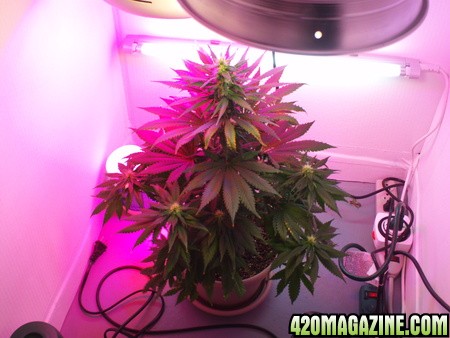
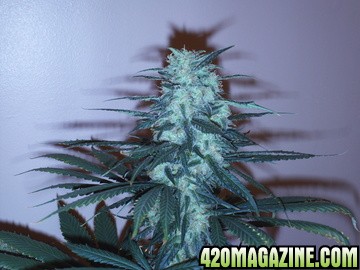
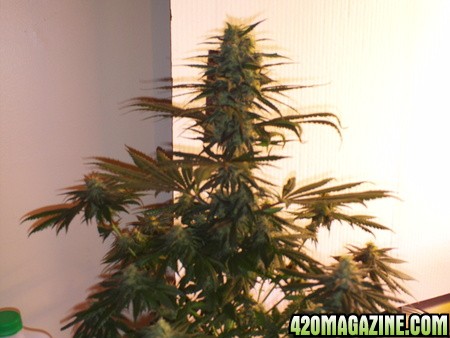
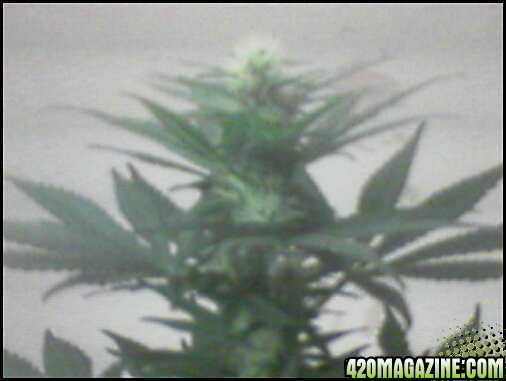
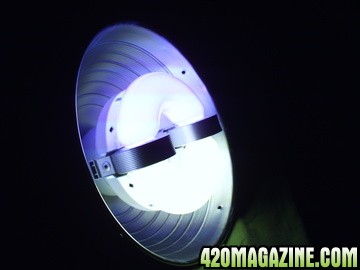
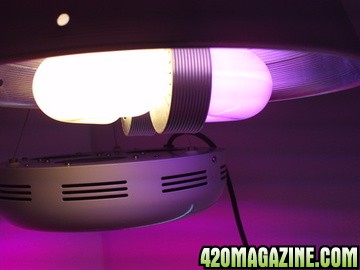
 My Brother!! How did it smoke?
My Brother!! How did it smoke? THey are looking good, I have one plant that is not really doing much I think one may have root bind but I am not sure yet I have not been here for a while and it could be something else possibly nutrient lockout
THey are looking good, I have one plant that is not really doing much I think one may have root bind but I am not sure yet I have not been here for a while and it could be something else possibly nutrient lockout But it has slowed drastically in growing
But it has slowed drastically in growing . LED whats up? What question can I answer for you?
. LED whats up? What question can I answer for you? which was maybe $90 difference that he took off of the total. So steal? No I think that is a fair discount for a customer who's crop you almost killed with under engineered product and who is probably responsible for at least 4 of his recent sales from people who have viewed this grow. He may be upset because I have not sent the plasmas back yet but I had to go out of town unexpectedly and have not been able to send them till recently. So If he wants to disregard his customers and give his new business a bad name already then he is doing a good Job and I am sorry you, LEDguy, had to be on the receiving end of his unprofessional business practice. I for one will no longer deal with HH after I this ordeal and now the slander
which was maybe $90 difference that he took off of the total. So steal? No I think that is a fair discount for a customer who's crop you almost killed with under engineered product and who is probably responsible for at least 4 of his recent sales from people who have viewed this grow. He may be upset because I have not sent the plasmas back yet but I had to go out of town unexpectedly and have not been able to send them till recently. So If he wants to disregard his customers and give his new business a bad name already then he is doing a good Job and I am sorry you, LEDguy, had to be on the receiving end of his unprofessional business practice. I for one will no longer deal with HH after I this ordeal and now the slander Thats too bad Because I do like the LED light but there are others that will work great too. On a happier note I have harvested some of my outdoor
Thats too bad Because I do like the LED light but there are others that will work great too. On a happier note I have harvested some of my outdoor



 I actually ended up adding...I laugh when I say this because its so far from the original set up..600 more watts of lighting
I actually ended up adding...I laugh when I say this because its so far from the original set up..600 more watts of lighting I did that in the form of a PG250 and I also added two feliz 125 watt 2700k warm spectrum cfl's, along with keeping one plasma going for right now . I also have two 50 watt 4ft t5's horizontally placed on each side. Needless to say its not easy on the electric bill, but it has been cool enough that I dont have to run the air conditioner so heat has not been an issue yet. The PG250's don't emit much heat at all so I dont think it will
I did that in the form of a PG250 and I also added two feliz 125 watt 2700k warm spectrum cfl's, along with keeping one plasma going for right now . I also have two 50 watt 4ft t5's horizontally placed on each side. Needless to say its not easy on the electric bill, but it has been cool enough that I dont have to run the air conditioner so heat has not been an issue yet. The PG250's don't emit much heat at all so I dont think it will

 I am really liking the two PG 250's teamed up, I am really surprised on the penetration of the LED. I am getting some pretty large bud growth below the canopy on the undergrowth
I am really liking the two PG 250's teamed up, I am really surprised on the penetration of the LED. I am getting some pretty large bud growth below the canopy on the undergrowth